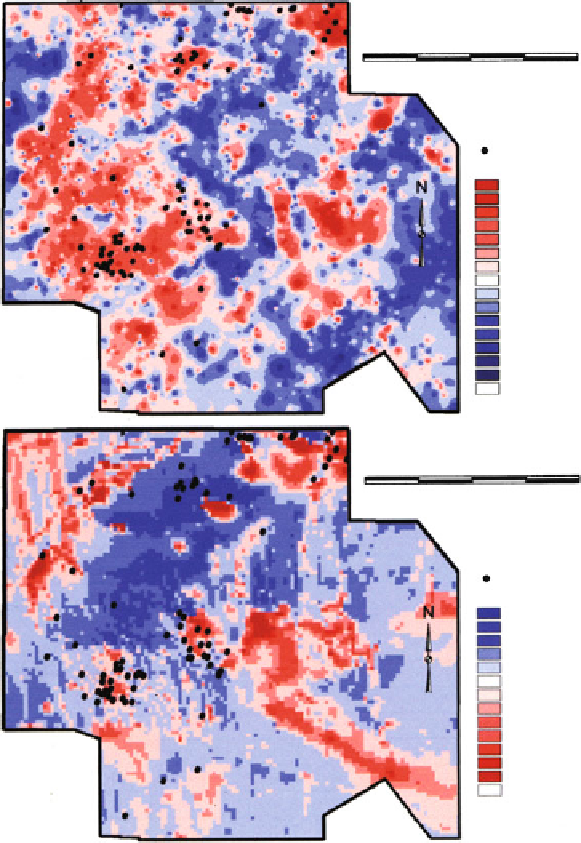Geoscience Reference
In-Depth Information
0
20
40
Kilometers
Gold occurrences
PC3 (Br, Cu, Mo)
<
−
3 Std. Dev.
−
3.0 -
−
2.5 Std. Dev.
−
2.0 Std. Dev.
−
2.0 -
−
1.5 Std. Dev.
−
2.5 -
−
1.5 -
−
1.0 Std. Dev.
−
0.5 Std. Dev.
−
0.5 -
−
0.0 Std. Dev.
1.0 -
−
Mean
0.0 - 0.5 Std. Dev.
0.5 - 1.0 Std. Dev.
1.0 - 1.5 Std. Dev.
1.5 - 2.0 Std. Dev.
2.0 - 2.5 Std. Dev.
2.5 - 3.0 Std. Dev.
b
>3 Std. Dev.
No data
0
20
40
Kilometers
Gold occurrences
Magnetics
−
2.5 -
−
2.0 Std. Dev.
−
2.0 -
−
1.5 Std. Dev.
1.0 Std. Dev.
−
1.0 -
−
0.5 Std. Dev.
−
1.5 -
−
−
0.5 -
−
0.0 Std. Dev.
Mean
0.0 - 0.5 Std. Dev.
0.5 - 1.0 Std. Dev.
1.0 - 1.5 Std. Dev.
1.5 - 2.0 Std. Dev.
2.0 - 2.5 Std. Dev.
2.5 - 3.0 Std. Dev.
c
>3 Std. Dev.
No data
Fig. 5.24
(continued)
relatively strong spatial association with the Au occurrences. Class values
are relative with limits determined by regional mean and standard deviation.
These PC3 values were transformed to define a WofE binary pattern using a
multiclass WofE analysis to select a threshold. Original classes as shown in
Fig.
5.24a
were used for WLR. In a similar way, the pattern of Fig.
5.24b
was
derived from aeromagnetic maps. The Au occurrences are mostly associated with
magnetic highs. All classes shown were used for WLR and a binary map layer for
WofE was formed by reclassification, again using multiclass WofE to determine a
threshold.

Search WWH ::

Custom Search